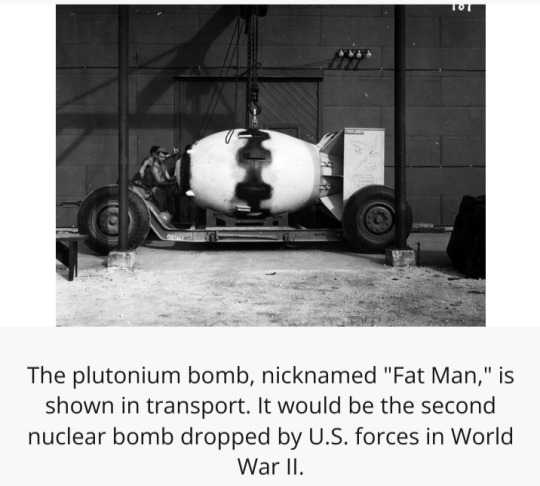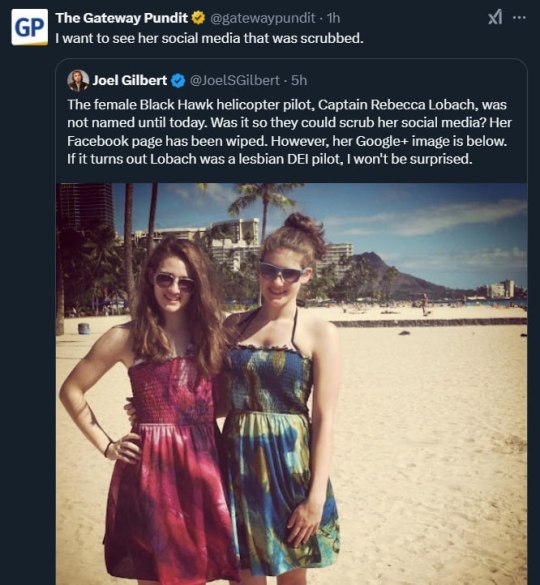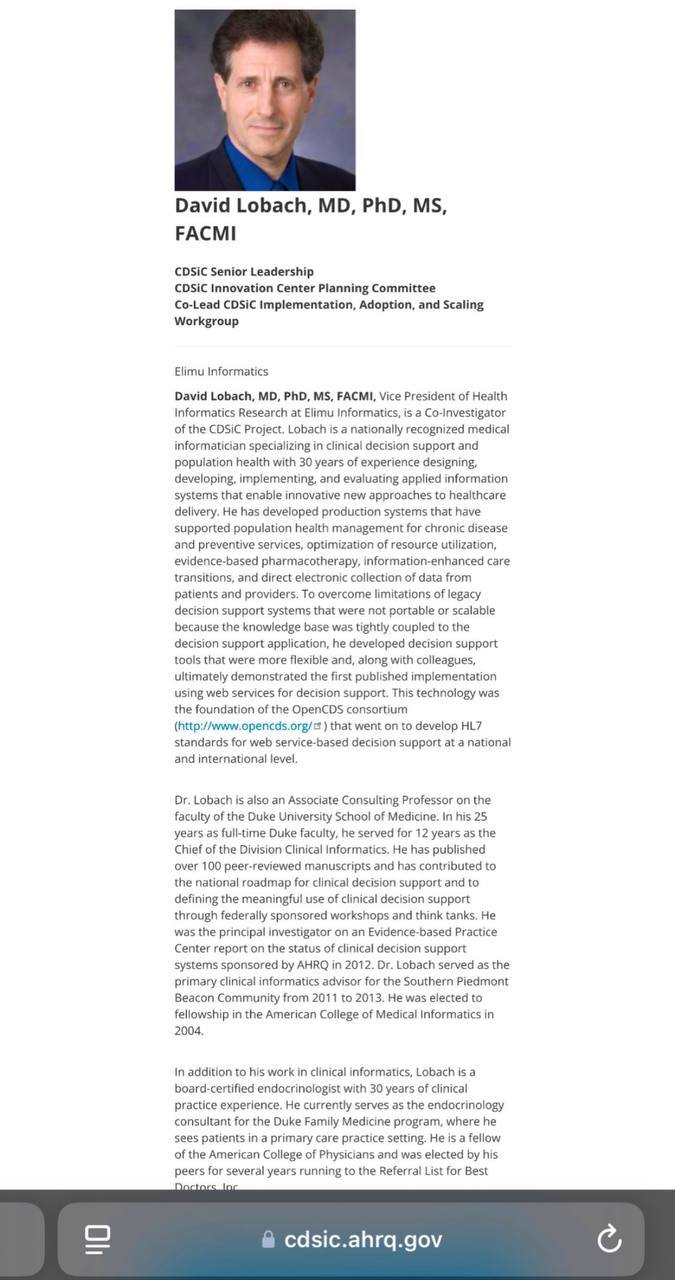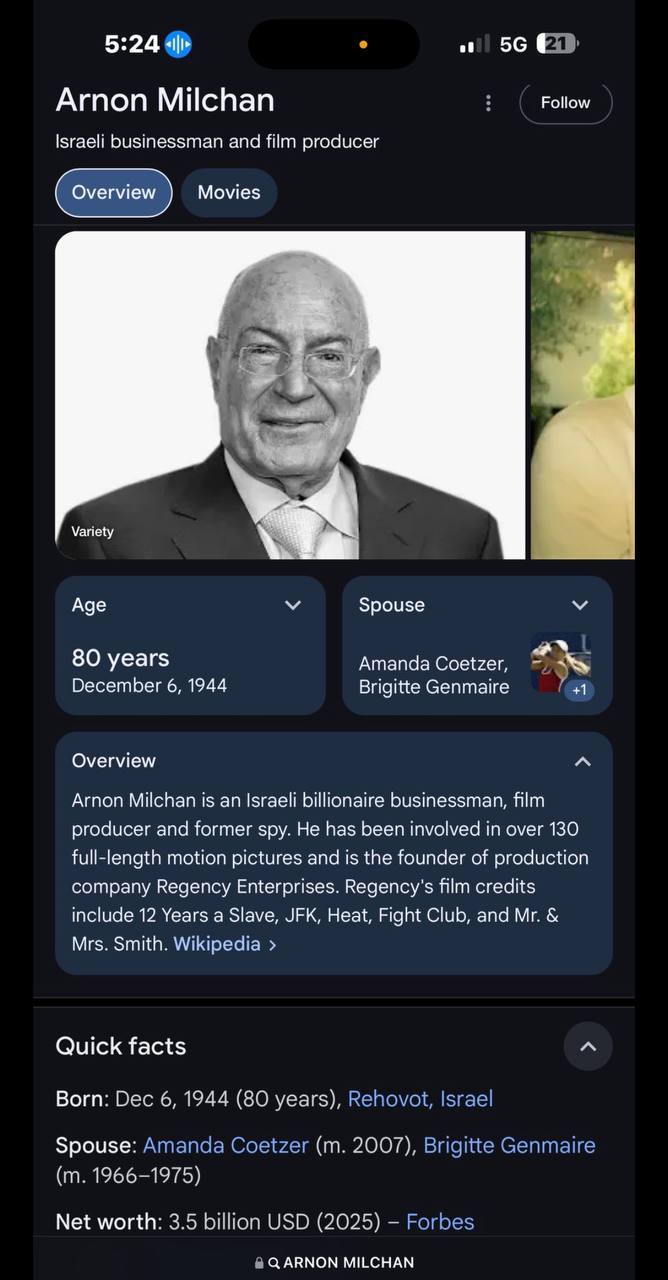#Nuclear Research and Development
Explore tagged Tumblr posts
Text
Molten Salt Reactor (MSR) Market Overview and Upcoming Trends 2032

Overview of the Molten Salt Reactor Market:
Global Molten Salt Reactors market is projected to grow at a CAGR of 5.9% by 2032.
The Molten Salt Reactor (MSR) Market revolves around the development, deployment, and commercialization of nuclear reactors that use molten salt as both fuel and coolant. MSR technology offers unique advantages, including enhanced safety, reduced nuclear waste, efficient fuel utilization, and the potential to operate on a variety of fuel types. The market is driven by the growing interest in advanced nuclear energy solutions that address safety concerns, waste management, and sustainable energy production.
Molten Salt Reactors (MSRs) are a type of advanced nuclear reactor technology that use a liquid mixture of salts as both the fuel and the coolant. MSRs offer several potential advantages, including increased safety, reduced nuclear waste, and the ability to efficiently use thorium as a fuel source. The MSR market has gained attention as a potential solution for addressing energy needs while minimizing environmental impacts.
Scope:
Advanced Reactor Technology: MSRs represent a novel approach to nuclear power generation, utilizing liquid fuel instead of solid fuel rods. The scope includes research, development, and commercialization of MSR designs.
Fuel Flexibility: MSRs can utilize a range of fuels, including thorium and enriched uranium, which expands the scope to exploring alternative fuel cycles for efficient energy production and reduced nuclear waste.
Nuclear Waste Reduction: The inherent design of MSRs can potentially reduce the long-lived nuclear waste compared to conventional reactors, making MSR technology part of waste management solutions.
Safety Features: MSRs offer passive safety mechanisms, including negative temperature coefficients and natural circulation of the molten fuel, which enhances reactor safety.
Thorium Fuel Cycle: The scope includes exploring the potential of thorium as a fuel source in MSRs, as it is more abundant and potentially safer compared to traditional uranium fuel.
Energy Generation: MSRs have potential applications in electricity generation, process heat production, and even hydrogen production, expanding the scope to various industrial sectors.
Research and Development: The scope encompasses ongoing research and development efforts to optimize MSR designs, improve fuel cycle efficiency, and enhance safety features.
Demand:
Clean Energy Generation: Growing demand for clean and low-carbon energy sources to address climate change and reduce greenhouse gas emissions drives interest in advanced nuclear technologies like MSRs.
Nuclear Power Resurgence: The MSR's potential to overcome some limitations of traditional reactors, such as safety concerns and nuclear waste issues, aligns with the global interest in reviving and advancing nuclear power.
Energy Security: MSRs offer a stable and reliable energy source that can contribute to energy security and grid stability, particularly in regions with limited access to traditional energy resources.
Industrial Applications: The high-temperature output of MSRs can be used for industrial processes, such as hydrogen production and desalination, driving demand for efficient and versatile energy solutions.
Opportunities:
Innovation in Nuclear Technology: The development of MSR technology presents opportunities for innovation in reactor design, materials science, and fuel cycle optimization.
Waste Management Solutions: MSRs' potential to reduce nuclear waste and utilize existing waste as fuel offers opportunities for addressing the long-term challenges of nuclear waste disposal.
Energy Transition: MSRs can be a bridge between conventional energy sources and a more sustainable future, presenting opportunities in the global transition to cleaner energy systems.
Collaboration and Investment: Opportunities exist for collaboration between governments, research institutions, and private sector companies to advance MSR technology through funding, expertise, and resources.
Energy Export and Security: Countries with advanced MSR technology can potentially export clean and safe nuclear energy solutions, enhancing energy security and international partnerships.
Nuclear Industry Revival: The development and deployment of MSRs can contribute to a revitalized nuclear industry by addressing public concerns, safety issues, and waste management challenges.
We recommend referring our Stringent datalytics firm, industry publications, and websites that specialize in providing market reports. These sources often offer comprehensive analysis, market trends, growth forecasts, competitive landscape, and other valuable insights into this market.
By visiting our website or contacting us directly, you can explore the availability of specific reports related to this market. These reports often require a purchase or subscription, but we provide comprehensive and in-depth information that can be valuable for businesses, investors, and individuals interested in this market.
“Remember to look for recent reports to ensure you have the most current and relevant information.”
Click Here, To Get Free Sample Report: https://stringentdatalytics.com/sample-request/molten-salt-reactor-market/12100/
Market Segmentations:
Global Molten Salt Reactor Market: By Company
• MAN Energy Solutions
• Kairos Power
• Enesoon Holding
• Copenhagen Atomics
• Terrestrial Energy
• Moltex Energy
• ThorCon Power
• Elysium Industries
• Transatomic
• Flibe Energy
• Lightbridge
• Shanghai TaiYang Technology Co.,Ltd
Global Molten Salt Reactor Market: By Type
• Thorium
• Plutonium
• Uranium
Global Molten Salt Reactor Market: By Application
• Oil and Gas
• Power and Energy
• Shipping
• Others
Global Molten Salt Reactor Market: Regional Analysis
The regional analysis of the global Molten Salt Reactor market provides insights into the market's performance across different regions of the world. The analysis is based on recent and future trends and includes market forecast for the prediction period. The countries covered in the regional analysis of the Molten Salt Reactor market report are as follows:
North America: The North America region includes the U.S., Canada, and Mexico. The U.S. is the largest market for Molten Salt Reactor in this region, followed by Canada and Mexico. The market growth in this region is primarily driven by the presence of key market players and the increasing demand for the product.
Europe: The Europe region includes Germany, France, U.K., Russia, Italy, Spain, Turkey, Netherlands, Switzerland, Belgium, and Rest of Europe. Germany is the largest market for Molten Salt Reactor in this region, followed by the U.K. and France. The market growth in this region is driven by the increasing demand for the product in the automotive and aerospace sectors.
Asia-Pacific: The Asia-Pacific region includes Singapore, Malaysia, Australia, Thailand, Indonesia, Philippines, China, Japan, India, South Korea, and Rest of Asia-Pacific. China is the largest market for Molten Salt Reactor in this region, followed by Japan and India. The market growth in this region is driven by the increasing adoption of the product in various end-use industries, such as automotive, aerospace, and construction.
Middle East and Africa: The Middle East and Africa region includes Saudi Arabia, U.A.E, South Africa, Egypt, Israel, and Rest of Middle East and Africa. The market growth in this region is driven by the increasing demand for the product in the aerospace and defense sectors.
South America: The South America region includes Argentina, Brazil, and Rest of South America. Brazil is the largest market for Molten Salt Reactor in this region, followed by Argentina. The market growth in this region is primarily driven by the increasing demand for the product in the automotive sector.
Visit Report Page for More Details: https://stringentdatalytics.com/reports/molten-salt-reactor-market/12100/
Reasons to Purchase Molten Salt Reactor Market Report:
• To gain insights into market trends and dynamics: this reports provide valuable insights into industry trends and dynamics, including market size, growth rates, and key drivers and challenges.
• To identify key players and competitors: this research reports can help businesses identify key players and competitors in their industry, including their market share, strategies, and strengths and weaknesses.
• To understand consumer behavior: this research reports can provide valuable insights into consumer behavior, including their preferences, purchasing habits, and demographics.
• To evaluate market opportunities: this research reports can help businesses evaluate market opportunities, including potential new products or services, new markets, and emerging trends.
• To make informed business decisions: this research reports provide businesses with data-driven insights that can help them make informed business decisions, including strategic planning, product development, and marketing and advertising strategies.
About US:
Stringent Datalytics offers both custom and syndicated market research reports. Custom market research reports are tailored to a specific client's needs and requirements. These reports provide unique insights into a particular industry or market segment and can help businesses make informed decisions about their strategies and operations.
Syndicated market research reports, on the other hand, are pre-existing reports that are available for purchase by multiple clients. These reports are often produced on a regular basis, such as annually or quarterly, and cover a broad range of industries and market segments. Syndicated reports provide clients with insights into industry trends, market sizes, and competitive landscapes. By offering both custom and syndicated reports, Stringent Datalytics can provide clients with a range of market research solutions that can be customized to their specific needs.
Contact US:
Stringent Datalytics
Contact No - +1 346 666 6655
Email Id - [email protected]
Web - https://stringentdatalytics.com/
#Molten Salt Reactor#MSR Technology#Advanced Nuclear Reactors#Nuclear Energy Innovation#Sustainable Energy Solutions#Clean Energy Generation#Nuclear Power Resurgence#Fuel Flexibility#Nuclear Waste Reduction#Thorium Fuel Cycle#Energy Security#Industrial Applications#Nuclear Research and Development#Passive Safety Features#Energy Transition#Nuclear Industry Revival#MSR Design#Energy Generation Technologies#Nuclear Waste Management#Nuclear Fuel Cycle#Renewable Energy Alternatives#Sustainable Nuclear Power.
0 notes
Text
Coin-sized nuclear 3V battery with 50-year lifespan enters mass production | TechSpot



4 notes
·
View notes
Text


On 6 August 1945, during World War II (1939-45), an American B-29 bomber dropped the world’s first deployed atomic bomb over the Japanese city of Hiroshima.
The explosion immediately killed an estimated 80,000 people; tens of thousands more would later die of radiation exposure.
Three days later, a second B-29 dropped another A-bomb on Nagasaki, killing an estimated 40,000 people.
Japan’s Emperor Hirohito announced his country’s unconditional surrender in World War II in a radio address on August 15, citing the devastating power of “a new and most cruel bomb.”
The Manhattan Project
Even before the outbreak of war in 1939, a group of American scientists — many of them refugees from fascist regimes in Europe — became concerned with nuclear weapons research being conducted in Nazi Germany.
In 1940, the U.S. government began funding its own atomic weapons development program, which came under the joint responsibility of the Office of Scientific Research and Development and the War Department after the U.S. entry into World War II.
The U.S. Army Corps of Engineers was tasked with spearheading the construction of the vast facilities necessary for the top-secret program, codenamed “The Manhattan Project” (for the engineering corps’ Manhattan district).

Over the next several years, the program’s scientists worked on producing the key materials for nuclear fission — uranium-235 and plutonium (Pu-239).
They sent them to Los Alamos, New Mexico, where a team led by J. Robert Oppenheimer worked to turn these materials into a workable atomic bomb.
Early on the morning of 16 July 1945, the Manhattan Project held its first successful test of an atomic device — a plutonium bomb — at the Trinity test site at Alamogordo, New Mexico.
No Surrender for the Japanese
By the time of the Trinity test, the Allied powers had already defeated Germany in Europe.
Japan, however, vowed to fight to the bitter end in the Pacific, despite clear indications (as early as 1944) that they had little chance of winning.
In fact, between mid-April 1945 (when President Harry Truman took office) and mid-July, Japanese forces inflicted Allied casualties totaling nearly half those suffered in three full years of war in the Pacific, proving that Japan had become even more deadly when faced with defeat.
In late July, Japan’s militarist government rejected the Allied demand for surrender put forth in the Potsdam Declaration, which threatened the Japanese with “prompt and utter destruction” if they refused.

General Douglas MacArthur and other top military commanders favored continuing the conventional bombing of Japan already in effect and following up with a massive invasion, codenamed “Operation Downfall.”
They advised Truman that such an invasion would result in U.S. casualties of up to 1 million.
In order to avoid such a high casualty rate, Truman decided – over the moral reservations of Secretary of War Henry Stimson, General Dwight Eisenhower and a number of the Manhattan Project scientists – to use the atomic bomb in the hopes of bringing the war to a quick end.
Proponents of the A-bomb — such as James Byrnes, Truman’s secretary of state — believed that its devastating power would not only end the war but also put the U.S. in a dominant position to determine the course of the postwar world.
'Little Boy' and 'Fat Man' Are Dropped

Hiroshima, a manufacturing center of some 350,000 people located about 500 miles from Tokyo, was selected as the first target.
After arriving at the U.S. base on the Pacific island of Tinian, the more than 9,000-pound uranium-235 bomb was loaded aboard a modified B-29 bomber christened Enola Gay (after the mother of its pilot, Colonel Paul Tibbets).
The plane dropped the bomb — known as “Little Boy” — by parachute at 8:15 in the morning.
It exploded 2,000 feet above Hiroshima in a blast equal to 12-15,000 tons of TNT, destroying five square miles of the city.
Hiroshima’s devastation failed to elicit immediate Japanese surrender, however, and on August 9, Major Charles Sweeney flew another B-29 bomber, Bockscar, from Tinian.
Thick clouds over the primary target, the city of Kokura, drove Sweeney to a secondary target, Nagasaki, where the plutonium bomb “Fat Man” was dropped at 11:02 that morning.

More powerful than the one used at Hiroshima, the bomb weighed nearly 10,000 pounds and was built to produce a 22-kiloton blast.
The topography of Nagasaki, which was nestled in narrow valleys between mountains, reduced the bomb’s effect, limiting the destruction to 2.6 square miles.
Aftermath of the Bombing

At noon on 15 August 1945 (Japanese time), Emperor Hirohito announced his country’s surrender in a radio broadcast.
The news spread quickly.
“Victory in Japan” or “V-J Day” celebrations broke out across the United States and other Allied nations.
The formal surrender agreement was signed on September 2, aboard the U.S. battleship Missouri, anchored in Tokyo Bay.
Because of the extent of the devastation and chaos — including the fact that much of the two cities' infrastructure was wiped out — exact death tolls from the bombing of Hiroshima and Nagasaki remain unknown.
However, it's estimated roughly 70,000 to 135,000 people died in Hiroshima and 60,000 to 80,000 people died in Nagasaki, both from acute exposure to the blasts and from long-term side effects of radiation.



#Bombing of Hiroshima and Nagasaki (1945)#6 August 1945#atomic bomb#Hiroshima#Nagasaki#B-29 bomber#A-bomb#U.S. Army Corps of Engineers#The Manhattan Project#nuclear weapons research#Office of Scientific Research and Development#War Department#World War II#WWII#uranium-235#plutonium (Pu-239)#nuclear fission#plutonium bomb#J. Robert Oppenheimer#Oppenheimer#Trinity test#Potsdam Declaration#General Douglas MacArthur#Operation Downfall#Henry Stimson#General Dwight Eisenhower#Enola Gay#Colonel Paul Tibbets#Bockscar#V-J Day
37 notes
·
View notes
Text

Prime example of screenshots of articles being less-than-ideal means of understanding news. "Every single one [sic] needs to adapt to this immediately".
Yet in the first paragraph of the screenshotted article, it is explicitly stated that "the [PBR] design [incorporated in the HTR-PM plant] can’t be adapted to existing nuclear reactors around the world, but could be a blueprint for future ones".
PBRs, or pebble-bed reactors (PBR), are a relatively "new" reactor design in which a large number of low-energy-density “pebbles” are used as fuel; these "pebbles" contain a small amount of uranium surrounded by graphite, which can slow the nuclear reaction and withstand high temperatures in crises. According to the article, necessarily, "old" reactors cannot adapt to PBR design, and research is still being conducted into optimizing PBR design (such as the referenced work of Zhe Dong and other researchers at Tsinghua University)
Below is the text of the article, as well as a link to an unpaywelled version of the article. Additionally, I have attached a citation of the paper by Zhang et al. 2024 ("Loss-of-cooling tests to verify inherent safety feature in the world’s first HTR-PM nuclear power plant") wherein the pebble-bed reactor (PBR) design and a loss-of-cooling test are explored in more detail.
(Also, "they intentionally turned off the cooling and the reactor cooled itself down, no problem"...
1) Vastly oversimplifies the tests
and 2) Doesn't do justice to the effort undertaken by Zhe Dong and other researchers on this project.
Conversely, here is how the cooling tests are described in Zhang et al. 2024.
"To confirm the presence of inherent safe reactors on a commercial scale, two natural cooling tests were performed on the #1 reactor module on August 13, 2023 and the #2 reactor module on September 1, 2023. During the entirety of the tests, the reactor modules were naturally cooled down without emergency core cooling systems or any cooling system driven by power. Although the feasibility of realizing inherent safety has been shown by the safety tests carried out on the test reactors of 45-MWt AVR17 and the 10-MWt HTR-10.18 The inherent safety at a commercial scale, such as the 200-MWt reactor power level, has not been verified before because the major bottleneck of decay-heat removal is managing the power level."
Paper citation:
Zhang, Z., Dong, Y., Li, F., Huang, X., Zheng, Y., Dong, Z., Zhang, H., Chen, Z., Li, X., 2024. Loss-of-cooling tests to verify inherent safety feature in the world’s first HTR-PM nuclear power plant. Joule. https://doi.org/10.1016/j.joule.2024.06.014
News article text:
"A large-scale nuclear power station in China is the first in the world to be completely impervious to dangerous meltdowns, even during a full loss of external power. The design can’t be adapted to existing nuclear reactors around the world, but could be a blueprint for future ones.
All modern nuclear power plants rely on powered cooling mechanisms to take excess heat away from reactors or, in the event of an emergency, human intervention to shut the plant down. Water or liquid carbon dioxide are often used as coolants, but these typically rely on external power supplies to function.
If these systems fail, then the reactors can become too hot and lead to explosions or overheating, causing the plant to literally melt from the excess heat. This was one factor in the Fukushima nuclear accident in Japan in 2011, where a loss of both standard and emergency power systems led to a meltdown.
A relatively new kind of reactor design, called a pebble-bed reactor (PBR), has the advantage of being passively safe, which means that if power for cooling systems is lost, then the reactor can safely shut down by itself. Rather than use highly energy-dense fuel rods like many other reactor designs, PBRs use a large number of low-energy-density “pebbles” as fuel, which contain a small amount of uranium surrounded by graphite. This can help slow the nuclear reaction and withstand high temperatures.
This lower energy density means any excess heat will be spread out over all of the pebbles, and so will be easier to transport away using natural cooling processes like conduction and convection, says Zhe Dong at Tsinghua University in China.
While small working prototype reactors have been built in Germany and China, no full-scale PBRs have been shown to work and be passively safe – until now. Dong and his colleagues have demonstrated that the system works with a full-scale nuclear plant, the High-Temperature Gas-Cooled Reactor Pebble-Bed Module (HTR-PM) in Shandong.
“Up to now, every commercial reactor except HTR-PM has had an emergency core cooling system,” says Dong. “However, due to the inherent safety, there is no emergency core cooling system in the HTR-PM plant.”
To test this, which became commercially operational in December 2023, Dong and his team switched off both modules of HTR-PM as they were operating at full power, then measured and tracked how the temperature of different parts of the plant went down afterwards. They found that HTR-PM naturally cooled and reached a stable temperature within 35 hours after the power was removed.
It is rare to be able to test a working power plant fully by removing its cooling power supply, says Mamdouh El-Shanawany, formerly at the International Atomic Energy Agency (IAEA). Because the emergency cooling system doesn’t depend on any complicated technology, it is very safe, he says.
Other countries might want to look into adapting this technology for their own future reactors, but we will first need more extensive measurements about the plant as it cools down, such as pressure and higher-resolution readings, says El-Shanawany."
#Nuclear power and AI are two subjects in which the average Tumblr discussion boils down to different camps in Plato's allegory of the cave#quibbling about the shape of shadows#Like. Completely ungrounded in meaningful political understandings of labor and labor protections (and often copyright law)#(and who the Luddites were)#as well as divorced from meaningful understandings of how the discussed technologies function#Now. AI and nuclear power were not subjects I studied for my degree. Because of this I did research to develop my understanding beyond#viral memes posted on here
5 notes
·
View notes
Text
I am once again asking who is going to sell me a bust replica of Jesus from the Vatican's "The Resurrection" so I can stick it in my zoom background and my nuclear disarmament views can haunt anyone unfortunate enough to call me.
#listen the catholic church has many many sins but it is doing a better job of being anti-nuclear armament than leftists on tumblr.#history is immutable but we can be advocating for wide scale disarmament and the decommissioning of nuclear sites and#putting research into the development of more effective containment of nuclear waste that already exists and will continue to exist NOW#I am going to stop grumbling. eventually. but oh my god.
9 notes
·
View notes
Text
You know what I think is so....there's such a pseudo respect for science on this website specifically but - just like in many societies generally - only when it speaks with authority. And yeah, the scientific method is how we're trying to find out truth about things, so we can base our decisions on this truth. At one point - you're gonna have to speak with some authority based on the research that has been done. But. So many people - in society and on this website - have not studied to become scientists. They have not learned about the scientific method. So all they see is apparently - science as authority. But science as authority is a consensus. 'Consensus' reached by multiple individual scientists who are no longer in major disagreement because so much research has been done that it SEEMS LIKE we're on to something. And yet, even then, everything may turn out to be wrong. Because people have been fabricating results for example (happened really seriously within the field of psychology) or because it turned out that most studies' methods or assumptions were less rigorous or accurate than desirable (lookin askance at economics) or the classic paradigm shift in physics where some whole new set of ideas topples earlier ones. It seems like we've reached a pretty solid idea of things. But when is that point? Very few people have been taught to recognise it. Which requires actually reading/scanning studies. Or at least good summaries. Getting a sense of what the landscape of ideas is. What are major theories and assumptions and results? (In uni, you get handed this in a course). More importantly, what is missing?? Once you go digging into any subject it generally turns out there's more gaps in understanding and especially empirical results WITH good methods than what's actually known. In uni, you're taught to recognise how researchers might have fucked up (at least, they attempt to teach this). What's solid stuff? What's rigorous research? What is valid and reliable? When is something TRUE? Here comes my personal opinion: if there's not 3- 10 citations behind a statement then you're knitting a web of maybes together. Actually it's NOT just my personal opinion, it's a major problem in scholarship and science that scientists are NOT reproducing studies because they are not rewarded for it - when the scientific method REQUIRES reproduction of results for any kind of robust 'truth' to emerge.
But most people are simply 100% not taught about HOW our societies make truth (emerge) - or rather how scientists should be doing this. They are delivered truth by the authority: science. But the nature of the scientific process delivers differing narratives, theories, hypotheses, especially until a kind of consensus is reached. So people take one study and run with it. Or 7 wildly differing studies which seem to be about the same thing but really aren't. And that's not even non-uni-educated people only, I've seen plenty of paper-publishing people knit their stuff together that way. Sometimes that's all the information there is! But though scientists are taught to point to the sources of information for statements they make - that doesn't mean that everything published is Fact. Most discussions of results would acknowledge this strenuously. Still, they're often cited that way if it suits the narrative of the paper pointing at them.
My point? Wish people would be MORE skeptical of 'science'. What? I hear you ask? More crazies who don't listen to reason? No - I just wish more people would have access to and the means to and the desire to and have respect for doing one's own research with the scientific method as FALLIBLE BUT ENDLESSLY SELF- ADJUSTING TRUTH-SEEKING MECHANISM in the backs of their minds. Which means reading. Literally just means reading, and staying critical, and recognising when things are not nearly ready to be called TRUTH yet at all and when things ARE ready to be called TRUTH (looking at climate change and its human causes and the major consensus on this).
What I mean is - again - wish people would actually read studies. Wish this was a thing taught to every child in secondary school. Otherwise you get people pointing at 30 studies about completely different arguments / completely different scope that lead back to about three studies of actual results eventually which didn't have amazing methods. And that's TRUTH and anyone who denied this Substantiated Common Sense is a moral idiot. Maybe let's do some rigorous testing first and then some pilots.
#genuinely dont think that the major truth -seeking process should be comprehensibly taught to only those people who might#do research in the future. should be taught to every citizen.#my stuff#personal#do i think that after having researched nuclear power plants four times 'superficially' i know whether its good or bad to invest in?#no#maybe the risks are overstated or maybe the risk is minimal and worth it maybe waste CAN be managed well despite historical#problems. maybe the risk of a huge national security risk and international health risK REALLY IS worth it BECAUSE#tech HAS developed enough and responsibility risks can be prevented eniugh that emissionless energy output for 30 years will be essential#do i know? no. and obviously im skeptical#but i never deny that there is a possibility i just need to get a clearer picture by actually looking at some actual literature#maybe its gonna save the damn world! who knows#not me#people r so bad at not knowing
3 notes
·
View notes
Text
Astrology observations 3😵💫
🪡 People with Pluto in the 10th house can go from being underestimated to running the whole damn show😫.
🪡 Saturn in the 9th house can make someone skeptical of belief systems until they’ve done their own research.
🪡 Moon in the 4th house people are deeply connected to their childhood memories—good or bad.
🪡 Mars conjunct Pluto people don’t get mad often, but when they do? It’s nuclear😊.
🪡 Sun conjunct Mercury people talk about themselves without realizing it—it’s not ego, it’s just their mind and identity fused together.
🪡 Saturn in the 1st house can make someone look more mature or serious from a young age.
🪡 Neptune trine Venus people have an ethereal beauty that feels almost otherworldly😇.
🪡 Jupiter in the 2nd house? Money seems to find you, but you probably spend it just as fast😭.
🪡 A person with a Grand Cross in fixed signs You’re incredibly determined but may struggle with stubbornness.
🪡 Neptune in the 1st house people often get misread because they reflect what others want to see.
🪡 If you have a Grand Cross in your chart, you’re built for high-stakes situations—you thrive under pressure.
🪡 Neptune conjunct the Ascendant? People either idealize you or misunderstand you completely😔.
🪡 Moon square Saturn people often felt like they had to suppress their emotions from a young age🖤.
🪡 A Yod with Mercury at the apex(point)? You’re meant to share your ideas, even if your communication skills took time to develop🧠.
🪡 Pluto square Sun people go through multiple ego deaths in life—each version of them is stronger than the last.
🪡 Venus conjunct Mars people have undeniable sexual chemistry—whether they realize it or not🥵.
🪡 people with Jupiter conjunct the Midheaven Success tends to find you, even when you’re not looking for it🍀.
🪡 Mercury square Neptune placements struggle with daydreaming mid-conversation or saying things that don’t quite land.
🪡 A Grand Trine in water? Your intuition is your superpower, but your emotions can be overwhelming😖.
🪡 If you have a Grand Trine, your talents come naturally—but you might not fully appreciate them because they feel effortless.
🪡 A Virgo might correct you, but it’s only because they care (and can’t help themselves)🖤.
🪡 Gemini placements have five different versions of themselves, and they rotate depending on who they’re around😭.
🪡 If a Leo goes silent, something is very wrong. Please go check on em😖.
🪡 If a Scorpio lets you in, they’ve already tested you mentally, emotionally, and spiritually.
819 notes
·
View notes
Text
New Development in the Helicopter Crash 👇

This gets more interesting 👇

Her social media has been scrubbed 👇

A White House aide for Biden 👇

Graduated with a Biology degree in 2019 from North Carolina Chapel Hill... Where the gain of function that created Covid started.
Let's löök at her parents 👇

REBECCA LOBACH was the DAUGHTER of DAVID LOBACH (Duke University Medicine; Elimu Informatics; HHS) and ELIZABETH LOBACH (New Regency).
DAVID FRANKLIN LOBACH
*DUKE UNIVERSITY SCHOOL OF MEDICINE, Chief of Division Clinical Informatics, Associate Consulting Professor
*DUKE FAMILY MEDICINE PROGRAM, Endocrinology Consultant
*ELIMU INFORMATICS, VP of Health Informatics
*CDSiC PROJECT, Elimu Informatics (Co-Investigator)
💥NOTE 1: Duke University is run by Trustees Chairman and Mossad asset, Laurene Sperling, who is also the Chairman of Combined Jewish Philanthropies (CJP) and is married to Thermo Fisher (PCR TESTS) Lead Director, Scott Sperling. Thermo Fisher = Temasek (Singapore).
💥NOTE 2: Duke University School of Medicine is led by Dean, Nancy Andrews, who is the Chairman of Wellcome Burroughs (Wellcome/Farrar), who sits on the Board of Directors at Novartis and is a Senior Advisor to NIH Executive Leadership (Anthony Fauci).
💥NOTE 3: Duke Kunshan is a PARTNERSHIP between Duke University and Wuhan University and it officially opened its doors in 2013, which is the SAME YEAR that DAVID RUBENSTEIN (Duke Capital Partners, Carlyle Group, Booz Allen Hamilton, CFR, Brookings, etc.) became the CHAIRMAN of the DUKE UNIVERSITY BOARD OF TRUSTEES.
*Both David Rubenstein and Laurene Sperling are CURRENTLY on the ADVISORY BOARD of DUKE KUNSHAN UNIVERSITY in WUHAN, CHINA.
Duke University is arguably the MOST IMPLICATED SCHOOL IN AMERICA with regard to the COVID PANDEMIC CONSPIRACY and the CREATION & RELEASE of COVID… and COVERUP of COVID’S ORIGINS.
Her Mother 👇
ELIZABETH LEE LOBACH
NEW REGENCY PRODUCTIONS (Development), Writers’ Assistant, Office Assistant, Analyst & Script Editor
*TWENTIETH CENTURY FOX (Post-Production), Office Assistant, Research & Analysis.
💥NOTE: New Regency Productions was FOUNDED by ISRAELI SPY, ARNON MILCHAN, one of NETANYAHU’S CLOSEST OPERATIVES and ISRAEL’S MOST LEGENDARY SPIES. He was involved in helping ISRAEL STEAL AMERICAN NUCLEAR SECRETS several decades ago.
Moving on 👇

This is the man that founded the company where helicopter pilot, Rebecca Lobach’s mother works…
Nothing to see here 👇


Rebecca Lobach was still in ROTC training in 2018.
How is she flying government continuity missions in a Blackhawk in Washington DC 6 years later as a captain? And how did she afford a $520,000 house two years into the military? 👇
Rebecca Lobach, involved in DCA crash, served as a White House social aide under Biden.
She escorted Ralph Lauren through the White House when he was among those awarded the Presidential Medal of Freedom by former fake President Joe Biden. 👇

This is a screen grab from the FAA’s Airman registry which is available to the public it shows that Rebecca Marie Lobach did not currently hold an FAA medical which is required to have military certificates converted over to FAA certificates meaning she lost her medical…? 👇

Not sure what she ‘destroyed’.. but she doesn’t look fit to me! 👇
A statement from:
Art Halvorson @ArtHalv....
As a former military instructor, I'll tell you that Rebecca Lobach in NO WAY should have been the pilot in command on that flight.
500 hours in 5 years is Inconceivable! 👇
I think there’s more to this tragic incident than DEI hiring, but it was because of DEI policies that Rebecca was on board that helicopter and there are now 67 people dead. 🤔
#pay attention#educate yourselves#educate yourself#reeducate yourselves#knowledge is power#reeducate yourself#think about it#think for yourselves#think for yourself#do your homework#do your research#do your own research#do some research#ask yourself questions#question everything#helicopter crash#news#rabbit hole#you can't make this shit up#government corruption#government secrets#investigation
274 notes
·
View notes
Text
I wrote a silly little thing about Tommy hiding the fact he wears glasses from Buck. Unfortunately, since i'm incapable of writing sexy times this is gonna have to stay g :(
Here's a small snippet:
“Be honest with me,” Buck said, arms crossed, “do you think Tommy is seeing someone else?”
Ravi choked. “What?”
“I’m serious. He keeps sneaking off with his phone.”
Ravi wiped his mouth and gave Buck a look. “Buck. Buddy. That man has stolen two helicopters for you.”
Buck waved it off. “Light domestic terrorism aside, I’m just saying something’s up. You think maybe he’s bored? I’ve been working tons of doubles lately so I haven’t had time for my normal gym routine. I think my butt’s gotten flat.”
“Tommy talks about your butt like it’s a religious experience.”
------------------------------------------------------------------------
If you see any spelling or grammar mistakes, please let me know.
You can read the whole thing below or on A03 -> Clearly Into You
---------------------------------------------------------
Buck wasn't usually a jealous guy. Okay. That was a lie. It had all started early one morning, Buck was balancing a banana nut muffin in one hand and a mug of coffee in the other when he noticed Tommy ducking back into the bedroom with his phone. Again. It was the third time that morning. This was after the incident yesterday—Tommy had disappeared into the garage just to “check a message,” and when Buck rounded the corner with a fresh cup of coffee to surprise him, Tommy had nearly jumped out of his skin. Buck's gut had churned then. Now it was practically staging a rebellion. He didn’t want to be that guy, the paranoid boyfriend, the clingy one, but when your long-term, ruggedly hot firefighter boyfriend starts acting like he's guarding the Missing Link every time his phone buzzes, you begin to worry. And Tommy? Tommy was the definition of sketchy lately. Buck had mentioned it casually to Tommy that night in bed. “You’ve been kind of... phone-private lately, huh?” Tommy had just snorted and rolled over, kissing Buck’s shoulder like that was an answer.
---------------------------------------------------------
The next day, Buck strolled into the living room with a dish towel slung over his shoulder and a faint whistle on his lips, just in time to catch Tommy snapping his phone screen off like he’d been caught looking up something deeply illicit. The speed of it was unnatural. Almost Olympic-level. Buck stopped mid-step, eyebrow lifting. “...Was that the nuclear launch codes, or…?” Tommy, sprawled on the couch with an exaggerated air of innocence, blinked up at him. “What?” “You just closed your phone like I walked in on you sexting a senator.” Tommy made a face, scoffing. “Don’t be ridiculous. I was—watching a video.” “Uh-huh,” Buck said, folding his arms. “Why’d you practically throw it across the room like it bit you?” Tommy shifted, “Reflexes. I’ve got cat-like reflexes.” “Oh, is that what we’re calling ‘panic’ now?” Tommy sniffed, nose tilted. “You startled me.” Buck peered at Tommy suspiciously. “What are you hiding?” “Nothing.” “Is it porn? “What? No!” Tommy didn’t even look up. “It was an educational video on new fire safety procedures.” Buck snorted. “Is that what we’re calling it now?” Tommy grinned. “Hey, I know “movie night” is a shared activity and I take our joint research sessions very seriously.” “Oh, joint research, huh?” Buck said, crossing his arms. “Because I distinctly remember you fast-forwarding through the plot last night.” “There was a plot?” Buck rolled his eyes but couldn’t stop the laugh that slipped out. “You know for a guy who claims he likes character development, you sure skipped a lot of dialogue.” “I’m just efficient,” Tommy said, smug. “Besides, I already know how it ends.” “Oh yeah?” Buck asked, stepping closer with a teasing smirk. “And how’s that?” “With both of us hitting pause because it got us a little too inspired.” “You know,” Buck murmured, eyes soft but sharp, “you’re very good at distracting me.” Tommy blinked, doing his best innocent face. “Am I?” “Mhm. Suspiciously good.” Buck kissed the corner of Tommy’s mouth, then pulled back just enough to look at him. “Almost like you’re trying to steer me away from asking what was going on with your phone earlier.” Tommy froze—just a flicker, just for a second—but Buck caught it. “It’s nothing, Evan. I promise.” And with that Tommy got up and walked into the kitchen.
---------------------------------------------------------
A few days later, another incident occurred when Buck showed up unannounced to Harbour Station to surprise Tommy with a sandwich from their favourite deli shop, which was the romantic equivalent of a bouquet of roses in firefighter terms. He spotted Tommy sitting alone in his truck in the back lot, hunched over his phone like it owed him money. Buck tapped on the window. Tommy jumped so hard he dropped the phone into the footwell. “Hey,” Buck said, peeking in. “What’re you doing out here?” Tommy looked mildly panicked. “Nothing! Just... decompressing.” Buck leaned into the window. “You know, when most people decompress, they don’t clutch their phone like it’s a cursed artifact.” Tommy fake-laughed, and kissed him on the cheek. “You're cute when you're nosy,” while casually sliding his phone back into his pocket. Suspicious. Very suspicious.
---------------------------------------------------------
After another non-answer from Tommy regarding his secretive phone use, Buck finally cornered Ravi in the kitchen of the 118, where Ravi was busy shoveling pasta into his mouth between calls. “Be honest with me,” Buck said, arms crossed, “do you think Tommy is seeing someone else?” Ravi choked. “What?” “I’m serious. He keeps sneaking off with his phone.” Ravi wiped his mouth and gave Buck a look. “Buck. Buddy. That man has stolen two helicopters for you.” Buck waved it off. “Light domestic terrorism aside, I’m just saying something’s up. You think maybe he’s bored? I’ve been working tons of doubles lately so I haven’t had time for my normal gym routine. I think my butt’s gotten flat.” “Tommy talks about your butt like it’s a religious experience.” Buck blushed. “Well. Still.” Since Buck’s falling out with Eddie—that argument in the kitchen that had left more than just words simmering—his friendship with Ravi had unexpectedly deepened. What started as casual conversation and shared beers had turned into real camaraderie, with Ravi naturally folding into Buck’s life outside the station. That meant spending time with Tommy too, and to Buck’s quiet delight, Ravi and Tommy hit it off effortlessly. The two shared an easy banter, trading dry humour and obscure movie references like they'd been friends for years. Ravi rolled his eyes. “Tommy’s not cheating. He’s obsessed with you. He just—sometimes he gets weird when something’s wrong with him. He doesn’t like looking vulnerable.” Buck narrowed his eyes. “So you do think something’s wrong.” Ravi shrugged. “Probably, but not something scandalous. He’s just not good at asking for help, you know that. Remember he tried to splint his own ankle last month with a clipboard and duct tape.” “…Yeah, okay. That tracks.” Ravi pointed a tomato sauce covered spoon at Buck’s chest. “If Tommy is hiding something, it’s probably because he’s the one embarrassed. You ever think of that?” Buck frowned. “I don’t like it when you’re right. It’s bad for our power dynamic.”
---------------------------------------------------------
The truth broke open like a scene from a soap opera. Buck walked into the kitchen one evening after a shortened shift to find Tommy squinting at his phone, held at arm’s length. Then—he reached into the drawer. Pulled out a sleek pair of reading glasses: Slim, black-rimmed, very distinguished. And slipped them on. Buck gasped like a Victorian man seeing a naked ankle. Tommy spun around, glasses in hand, caught red-handed. “Don’t say anything,” he muttered. “Please. I know. It’s awful.” Buck stared. “That’s what all this has been? The secret phone stuff? The whispering? The disappearing acts?” Tommy looked sheepish. “I didn’t want you to see me like this.” “Like what? Sexy librarian-core? Because it’s working.” Tommy groaned and sank into a chair. “No, I didn’t want you to see this version of me. I’m officially ancient. Glasses for the phone. Next it’ll be pill organizers and orthopedic sandals. You’re going to realize I’m some tragic, washed-up old man and run off with someone who can read a menu without squinting.” Buck blinked. “…You think I’m going to stop loving you because you need reading glasses?” Tommy looked truly miserable. “You’re still in your thirties. I’m—well, not. And look at me. The greys, a back that makes that clicking noise when I get out of bed. And I didn’t want you to—” Buck took a step forward. “Didn’t want me to what?” Tommy rubbed the back of his neck. “Realize how much older I am than you.” Buck stared at him, heart lurching. Then he stepped in, gently took the glasses, and placed them back on Tommy’s face. “You look like a sexy professor who teaches Advanced Fire Tactics at the Academy. Honestly, I’d enroll twice.” Tommy snorted. “And for the record?” Buck continued. “Yeah, your body’s incredible. You’re all tall and muscly, with those ridiculous forearms and muscles on top of muscles in your biceps that’s not even fair. And the flecks of grey in your hair? I’ve been trying to act normal about it, but it makes me want to climb you like a rope ladder.” Tommy laughed, the tension cracking at last. “But even if you didn’t look like that,” Buck added, quieter now, “I’d still love you. Because of how you show up. Because of how you make me feel like I matter, even when I’m being annoying or insecure or irrational.” He cupped Tommy’s face. “You’re smart. Snarky. Kind. You give a crap about people, even when it costs you something. That’s what I fell for. And that’s not going away.” Tommy looked at him for a beat, the barest shine in his eyes. “So... you’re okay with the glasses?” “Like you wouldn’t believe,” Buck whispered. “Want me to keep wearing them?” Buck said, grinning. “You might wanna bring them to bed. Just saying.” Tommy kissed him — slow, smiling against his lips. “You’re a menace.” “But I’m your menace,” Buck said.
---------------------------------------------------------
Tommy had been hesitant at first—wearing the glasses only when he was home alone, taking them off the second someone knocked at the door, and absolutely refusing to wear them during social gatherings. But Buck noticed. Of course he did. And over time, with quiet compliments and casual sincere praise, Buck chipped away at whatever insecurity was holding Tommy back. Now, Tommy wore them without flinching. Still a little self-conscious, maybe, still adjusting to the feel of them on his face—but the difference was noticeable. He didn’t hide anymore. Buck noticed that, too. Tommy adjusted his new glasses on the bridge of his nose, squinting at the mirror like the frames might suddenly shapeshift into something more flattering. “You keep looking at yourself like you’re trying to figure out who you are,” Buck said from the doorway, arms crossed, leaning just enough to make it obvious he’d been watching for a while. “I look like a dad trying to figure out how to work his own thermostat,” Tommy muttered. “You look like a sexy professor who could ruin my life in under ten seconds,” Buck said, dead serious. Tommy turned, raising an eyebrow over the rim of the glasses. “Ruin your life, huh?” “Oh yeah,” Buck said, pushing off the doorway and walking closer. “Like, ‘talk sternly to me in a quiet voice while handing me back my overdue essay face down’ kind of ruin.” Tommy smirked. “You have a whole fantasy worked out already?” Buck shrugged. “Not my fault you put those on and suddenly I want to sin in a public classroom.” Tommy laughed, cheeks a little pink. “You’re ridiculous.” “You’re hot,” Buck shot back, stopping just in front of him. “I mean—you were already hot. But now? Now I want to make bad choices with you in a very well-lit, academic environment.” Tommy leaned in slightly, eyes glinting. “So what you’re saying is… I should wear these more often.” Buck grinned, voice low and warm. “I’m saying if you don’t, I might start leaving textbooks around the house just to tempt you.” Tommy reached up, slowly removing the glasses and setting them aside. “Well. That sounds like dangerous encouragement.” Buck stepped closer, practically nose to nose now. “Good. I like a little danger.”
---------------------------------------------------------
#bucktommy#tommy kinard#evan buckley#911 fic#tommy wears glasses#and buck likes it#tommy worries that he's getting old#some misunderstandings but mostly fluff
123 notes
·
View notes
Text
Good News - May 22-28
Like these weekly compilations? Support me on Ko-fi or $Kaybarr1735! Also, if you tip me on Ko-fi or CashApp (and give me some way to contact you if it doesn’t automatically), at the end of the month I'll send you a link to all of the articles I found but didn't use each week - almost double the content!
1. Scientists Invent Healthier More Sustainable Chocolate

“The new chocolate recipe from researchers at ETH Zurich uses more materials from the cocoa pod that are usually discarded, including more of the pulp as well as the inner lining of the husk, known as the endocarp. […] The resulting chocolate also [was “deliciously sweet” and] had 20% more fibre and 30 percent less saturated fat than average European dark chocolate[, and] it could enable cocoa farmers [to] earn more from their crops.”
2. Vermont Is Coming for Big Oil, Making It Pay for Decades of Climate Pollution

“Legislators in Montpelier are on the brink of enacting the "Climate Superfund Act," modeled after the federal Superfund law, that seeks to make oil, gas and coal companies pay for damages linked to historical greenhouse gas emissions. […] Companies would be held liable for the costs associated with […] floods and heat waves, along with losses to biodiversity, safety, economic development and anything else the treasurer deems reasonable[, that were caused by their emissions].”
3. Important bird habitat now protected in the Rocky Mountain Trench
“Grassland-reliant species in the Rocky Mountain Trench now have more protected habitat thanks to a new [270-hectare] conservation area near Cranbrook. […] About one-third of the Skookumchuck Prairie Conservation Area is forested[…,] Most of the site is a dry grassland[…, and] Three hectares of wetlands add to the landscape diversity and offer crucial benefits to wildlife and water systems in the area. This conservation gem also provides habitat for endangered American badger and excellent winter range for elk, mule deer and white-tailed deer.”
4. Lemur Week marked by 70th breeding success

“A wildlife park has celebrated its 70th lemur breeding success ahead of a week raising money to help save the endangered primates. […] The park's open-air Madagascar exhibit is home to 31 free-roaming lemurs and was officially opened in 2008. […] Females are only sexually receptive for just one or two days a year, leaving a small window of opportunity for males to father offspring. […] The two playful siblings, one female and one male, were born to father Bernard and mother Hira.”
5. Innovative material for sustainable building
“Researchers introduce a polymer-based material with unique properties. This material allows sunlight to enter, maintains a more comfortable indoor climate without additional energy, and cleans itself like a lotus leaf. The new development could replace glass components in walls and roofs in the future.”
6. Isle of Wight eagles don't pose threat to lambs as feared

“While there had previously been fears that the eagles would feed on livestock, such as lambs, the project has found no evidence of this. [… “W]hite-tailed eagles effectively steal meals from other predatory birds[, which is] a really important ecological role that had been lost within the landscape and is being restored.” [… The birds’] population was boosted by a chick last year – the first time the species has bred in England in 240 years.”
7. Breakthrough discovery uses engineered surfaces to shed heat
“Cheng's team has found a way to lower the starting point of the [Leidenfrost] effect by producing a surface covered with micropillars. […] The discovery has great potential in heat transfer applications such as the cooling of industrial machines and surface fouling cleaning for heat exchangers. It also could help prevent damage and even disaster to nuclear machinery.”
8. New malaria vaccine delivered for the first time

“A total of 43,000 doses arrived by air today from UNICEF, and another 120,000 are scheduled to show up in the coming days. […] They're the first vaccines designed to work against a human parasite. […] Across four African countries, these trials showed a 75% reduction in malaria cases in the year following vaccination of young children. […] The Serum Institute of India, who will be manufacturing the new vaccine, says a hundred million doses will likely be available to countries by the middle of next year.”
9. Urban gardening may improve human health: Microbial exposure boosts immune system
“"One month of urban indoor gardening boosted the diversity of bacteria on the skin of the subjects and was associated with higher levels of anti-inflammatory cytokines in the blood. The group studied used a growing medium with high microbial diversity emulating the forest soil," [… whereas] the control group used a microbially poor peat-based medium. [… N]o changes in the blood or the skin microbiota were seen. […] “This is the first time we can demonstrate that meaningful and natural human activity can increase the diversity of the microbiota of healthy adults and, at the same time, contribute to the regulation of the immune system."”
10. Cities Are Switching to Electric Vehicles Faster Than Individuals

“[M]ost large cities have adopted some kind of climate goal, and some of them are buying EVs for their municipal fleets at a faster rate than the general public. And that progress could speed up as more EVs enter the market and as cities get educated about grant funding and tax incentives that were passed over the last four years.”
May 15-21 news here | (all credit for images and written material can be found at the source linked; I don’t claim credit for anything but curating.)
#hopepunk#good news#chocolate#sustainability#farming#health#vermont#big oil#oil companies#climate change#cooling#technology#nuclear#malaria#vaccine#africa#unicef#eagles#livestock#england#birds#electric vehicles#glass#energy efficiency#habitat#conservation#lemur#zoo#gardening#urban gardening
353 notes
·
View notes
Text
Brian Barrett at Wired (02.27.2025):
If you’ve felt overwhelmed by all the DOGE news, you’re not alone. You’d need too much cork board and yarn to keep track of which agencies it has occupied by now, much less what it’s doing there. Here’s a simple rubric, though, to help contextualize the DOGE updates you do have time and energy to process: It’s worse than you think. DOGE is hard to keep track of. This is by design; the only information about the group outside of its own mistake-ridden ledger of “savings” comes from media reports. So much for being “maximally transparent,” as Elon Musk has promised. The blurriness is also partly a function of the speed and breadth with which DOGE has operated. Keeping track of the destruction is like counting individual bricks scattered around a demolition site.
You may be aware, for instance, that a 19-year-old who goes by “Big Balls” online plays some role in all this. Seems bad. But you may have missed that Edward Coristine has since been installed at the nation’s top cybersecurity agency. And the State Department and the Small Business Administration. And he has a Department of Homeland Security email address and, by the way, also had a recent side gig selling AI Discord bots to Russians. See? Worse than you think. [...] Similarly, you’ve likely heard that the United States Agency for International Development has been gutted and the Consumer Financial Protection Bureau has been put on ice. All true, all bad. But here’s what that means in practice: Fewer people globally have access to vaccines than they did a month ago. More babies are being born with HIV/AIDS. From here on out, anyone who gets ripped off by payday loan companies—or, say, social media platforms moonlighting as payments services—has lost their most capable defender. Keep going. The thousands of so-called probationary employees DOGE has fired included a significant number of experienced workers who had just been promoted or transferred. National Science Foundation staffing cuts and proposed National Institutes of Health grant limits will combine to kneecap scientific research in the United States for a generation. Terminations at the US Department of Agriculture have sent programs designed to help farmers into disarray. On Wednesday, the Food and Drug Administration canceled a meeting that would have given guidance on this year’s flu vaccine composition. It hasn’t been rescheduled.
Don’t care about science or vaccines? The Social Security Administration is reportedly going to cut its staff in half. The Department of Housing and Urban Development is going to be cut by as much as 84 percent. Hundreds of workers who keep the power grid humming in the Pacific Northwest were fired before a scramble to rehire a few of them. The National Parks Service, the Internal Revenue Service, all hit hard. So don’t make any long-term bets on getting your checks on time, keeping your lights on, buying a home for the first time, or enjoying Yosemite. Don’t assume all the things that work now will still work tomorrow.
Speaking of which, let’s not forget that DOGE has fired people working to prevent bird flu and to safeguard the US nuclear arsenal. (The problem with throwing a chainsaw around is that you don’t make clean cuts.) The agencies in question have reportedly tried to hire those workers back. Fine. But even if they’re able to, the long-term question that hasn’t been answered yet is, Who would stay? Who would work under a regime so cocksure and incompetent that it would mistakenly fire the only handful of people who actually know how to take care of the nukes? According to a recent report from The Bulwark, that brain drain is already underway. And this is all before the real reductions in force begin, mass purges of civil servants that will soon be conducted, it seems, with an assist from DOGE-modified, automated software. The US government is about to lose decades of institutional knowledge across who knows how many agencies, including specialists that aren’t readily replaced by loyalists.
Wired has a solid article on how bad the DOGE-ificiation of government has gotten.
#DOGE#Elon Musk#Edward Coristine#Musk Coup#Trump Administration II#Department of Government Efficency
108 notes
·
View notes
Text
An innovative algorithm for detecting collisions of high-speed particles within nuclear fusion reactors has been developed, inspired by technologies used to determine whether bullets hit targets in video games. This advancement enables rapid predictions of collisions, significantly enhancing the stability and design efficiency of future fusion reactors. Professor Eisung Yoon and his research team in the Department of Nuclear Engineering at UNIST announced that they have successfully developed a collision detection algorithm capable of quickly identifying collision points of high-speed particles within virtual fusion devices. The research is published in the journal Computer Physics Communications.
Continue Reading.
67 notes
·
View notes
Text
The United States solar energy boom is finally taking off - in the worst way. In the Mojave desert and other federal lands across the West, utility-scale installations are putting gigawatt-hours of energy on the board and powering millions of homes. But the designs are sloppy, the labor conditions are horrific, and the environmental damage is incalculable. Ancient joshua trees are being clear cut, endangered desert tortoises are being left for dead, the vast biotic carbon stores of Mojave soils are being upturned, and the reflectivity of enormous expanses of desert are being altered, affecting the planetary climate. But it doesn't have to be this way. There's a type of energy that requires no fuel and no land. It hardly even needs transmission lines, as it can be built at the site of use: rooftop solar. Every hour of the day, rooftops across the United States soak up enough sun to generate petawatts of power. Estimates for their potential to offset US energy demand range from 13 percent to over 100. Yet at present, only around 2 percent of US energy is generated by rooftop. And then there's land area that's already been developed. Just by building solar on degraded lands, focusing on superfund sites, reservoirs, and farmland, researchers estimate we could generate more than enough to offset today's national energy demand. While there are points of dispute concerning some projections, the conclusion is clear: between the potential of degraded lands, rooftops, wind, and storage - plus existing hydro, nuclear, and other zero carbon energy sources, there's really no need to tear up the rare and fragile ecosystems of our deserts.
1K notes
·
View notes
Text
Forget DEI buzzwords—the Trump administration’s government censorship ordinance is now infringing on language that will make it nearly impossible for agencies to do their job. A leaked memo from the U.S. Department of Agriculture’s Research Service division revealed Sunday that the agency has banned some key language from its vocabulary, including the words “climate” and “vulnerable,” as well as the phrase “safe drinking water.” Other baffling entries on the memo’s banned language list are “greenhouse gas emissions,” “methane emissions,” “sustainable construction,” “solar energy,” and “geothermal,” as well as “nuclear energy,” “diesel,” “affordable housing,” “prefabricated housing,” “runoff,” “microplastics,” “water pollution,” “soil pollution,” “groundwater pollution,” “sediment remediation,” “water collection,” “water treatment,” “rural water,” and “clean water,” among dozens of others. “When evaluating agreements, those entries that include these terms or similar terms cannot be submitted,” wrote Sharon Strickland, the USDA’s Northeast area financial management, travel and agreements section head, in an internal March 20 email. The review will “ensure that we maintain compliance with the Administration’s EOS.” It’s unclear how the guidance would do anything other than completely hinder the department’s ability to monitor the health and edibility of crops, or aid America’s rural development—some of its primary functions. What is clear, however, is that purging such basic speech will stifle scientific research and discourse.
continue reading
71 notes
·
View notes
Text
Rutherfordium, Hassium & Mendelevium

Rutherfordium (based on designs by @shardthefuckingwhajje and @vitasnova) is largely based on their namesake; they love golf and their collar tag & radiation scars are based on the Order of Merit. Discovered at the Joint Institute for Nuclear Research in Dubna in 1966-1969.
Hassium (@lotus-and-pkmn and @cosmosnaught) was reportedly created around the same time (1984) by the JINR and GSI institutes and eventually named after the German state of Hesse, where the GSI is located in Darmstadt.
Mendelevium was mostly designed by 03113 in our server. Discovered in Berkeley in 1955 and named, of course, after the Russian chemist known for developing the periodic law.
#elementcattos#fan design#chemistry#cat#rutherfordium#hassium#mendelevium#radioactive#synthetic#metal#actinide#d-block#f-block
58 notes
·
View notes
Text

Hi everyone!
I'm asking for a (free) favor from y'all.
I'm trying to get more people to sign up for my free monthly author newsletter, and I'd love for you to help me find people who might enjoy it.
Every month, I write an essay about a subject. I'm not just collecting contacts to send ads to!
Sometimes it's about writing process
A Unique Character Development Technique
The Golden Girls, D&D, and The Newest Way I’m Refusing to Make Writing Solitary
The Bananabook Method
Lies I Tell Myself, Security Blankets and Backstitch Drafting
On Listening When You Want to Throw Things and Break Stuff
And other times it's a deep dive into a research topic for my books
Why I’m Researching a 19th Century Cult This Month
Spider Goat is Real but is Not Marvel Affiliated
People Just Really Want to Say "Enhance"
That Most Intimate of Thrones
Whose Side is Your House On?
The Care and Feeding of Dream Homes
What Arguing About Captain America Taught Me About Psychotherapy
Nuclear Waste and the Ray Cat Solution
Sometimes it's about mental health, especially through the lenses of fantasy and scifi
Of Flesh and Gundams
What Feeling Are You Most Afraid Of?
Sometimes it's even about legal systems and their interactions with the medical field and expanding medical technologies
Tractors, Cybernetics and the Radical at the Radioshack
Because Everybody Was Calling for YA Scifi About HIPAA, Right?
Or queer stuff
What Do We Celebrate?
What Stories Are You Made Of?
Or disability
Another Kind of Coziness
Tinkering With Cyberpunk
Things I Stole from Julian Bashir
What Does Time Feel Like?
Or it could be anything else that I'm willing to think deeper about that month. You can browse the full archive over here.
AND it almost always includes pictures of my very cute cats!
So could you please boost, if you feel your followers might be into that?
The subscription signup is right here.
Help an indie author out?
#psychology#indie authors#writing process#on writing#writing advice#cyberpunk#disability#queerness#queer author#indie author#authors of tumblr#shed letters
367 notes
·
View notes